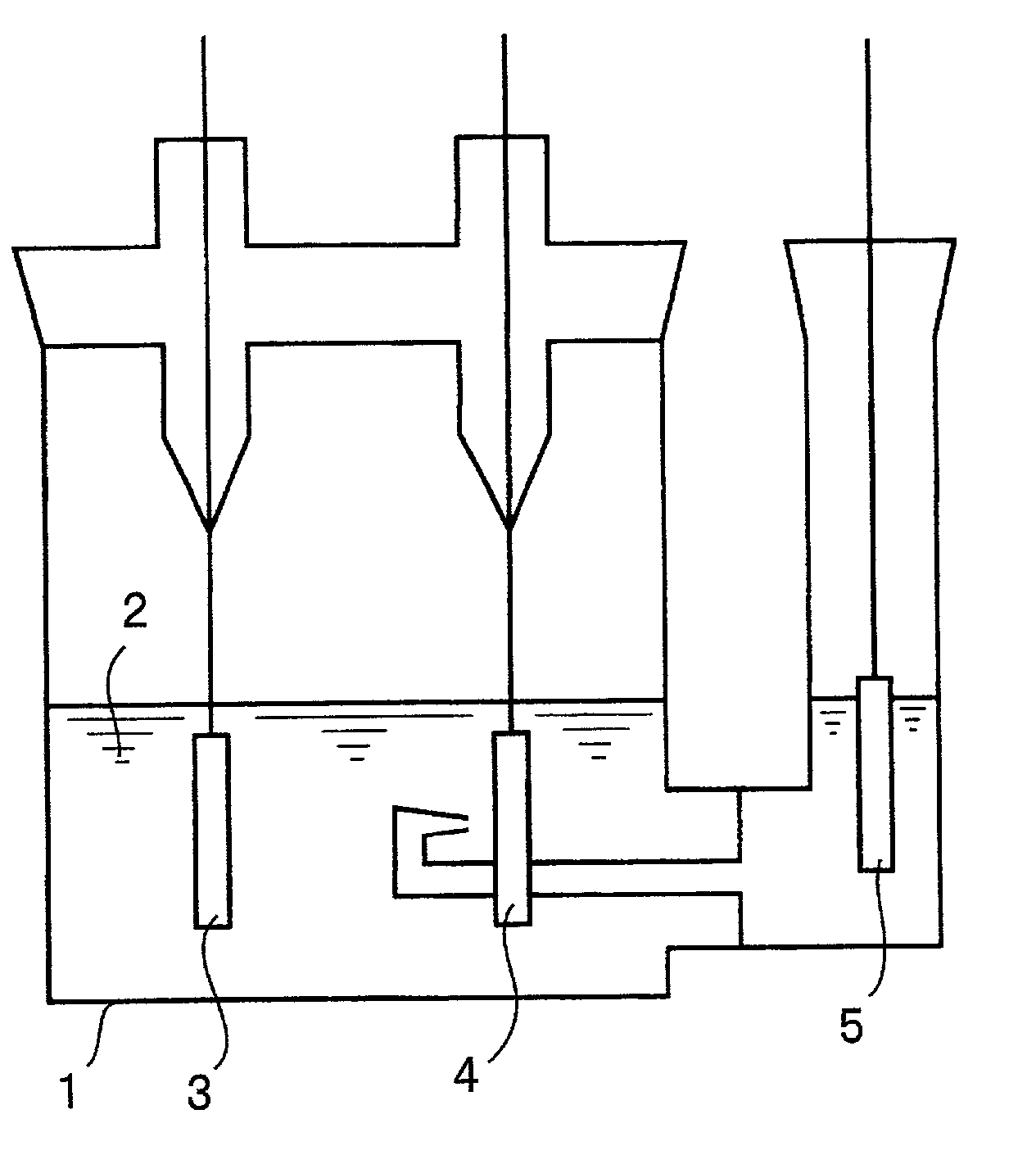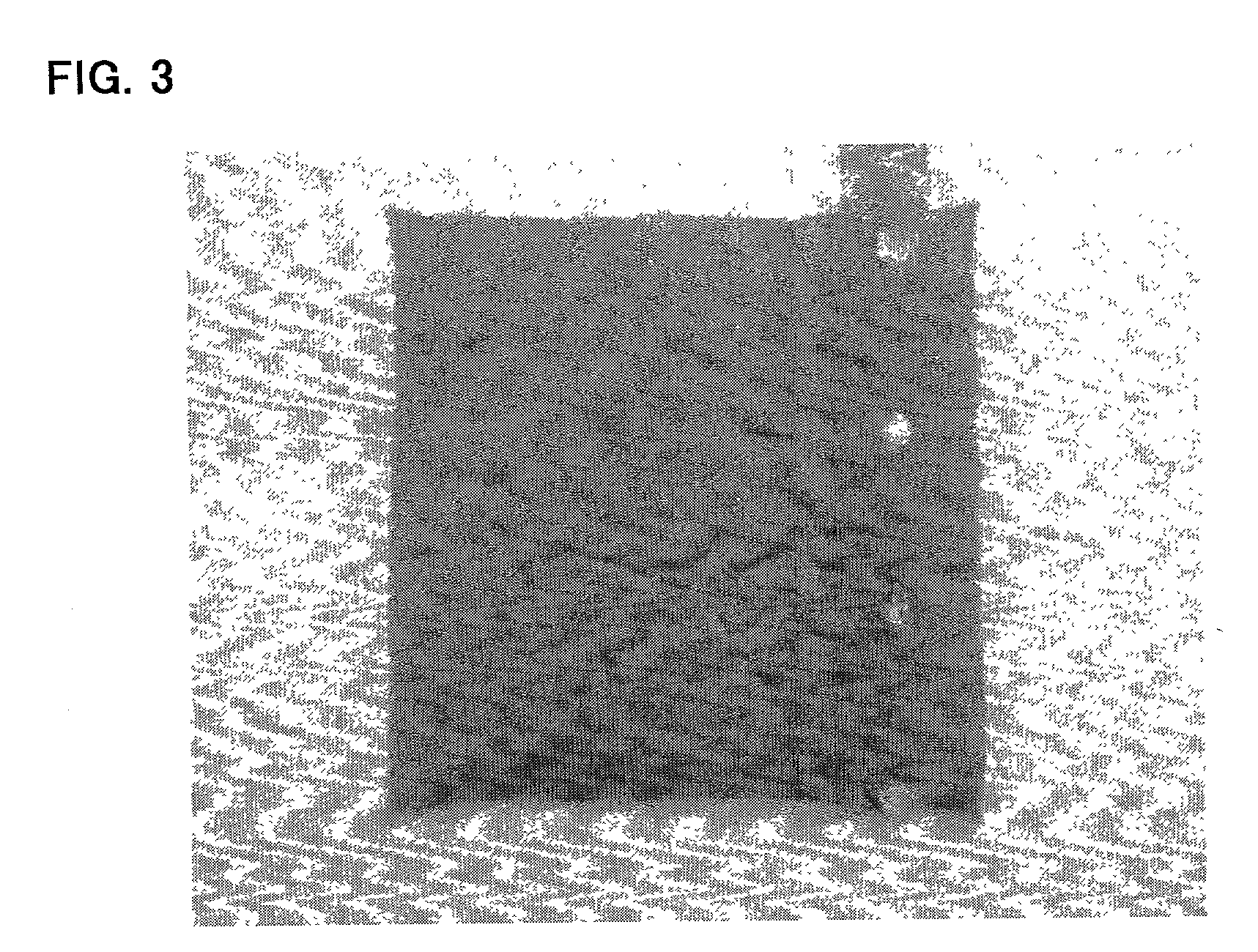Electrode for rechargeable lithium battery and rechargeable lithium battery
a rechargeable lithium battery and lithium battery technology, applied in the direction of active material electrodes, non-aqueous electrolyte accumulator electrodes, cell components, etc., can solve the problems of large stress in the current collector, internal short circuit, and failure to obtain satisfactory charge-discharge cycle characteristics
- Summary
- Abstract
- Description
- Claims
- Application Information
AI Technical Summary
Benefits of technology
Problems solved by technology
Method used
Image
Examples
experiment 1
Examples 1 and 2
[0055] (Fabrication of Working Electrodes)
[0056] Burning copper plating was carried out electrolytically to form a particulate copper deposit on a Corson alloy foil. Further, copper plating (covering plating) was carried out to form a dense copper deposit on the particulate copper deposit. As a result, a surface-roughened copper alloy foil with enhanced adhesion between the particulate copper deposit and the Corson alloy foil was fabricated. This foil was designated as a current collector a1.
[0057] Next, a Cu--Cr--Zr--Mg alloy foil was subjected to the same treatments as used in the fabrication of the current collector a1, i.e., subjected to the sequence of burning and covering plating treatments to fabricate a current collector a2.
[0058] The thickness, tensile strength, proportional limit, elastic coefficient and surface roughness Ra, measured for each of the current collectors a1 and a2, are listed in Table 1.
[0059] In Table 1, the thickness is given by a value mea...
experiment 2
[0078] (Fabrication of Current Collectors)
[0079] (Current Collector c1)
[0080] A rolled copper foil (thickness of 18 .mu.m) was subjected to a burning plating treatment using a copper sulfate plating solution sold in the market and then to a covering plating treatment to fabricate a current collector c1. The burning plating treatment was performed using a plating solution containing sulfuric acid and copper sulfate at a 20:7 ratio by weight, at a current density of 3 A / dm.sup.2 for a duration of 3 minutes. After this burning plating treatment, the copper foil was washed with water and then subjected to the covering plating treatment. The covering plating treatment was carried out using a plating solution containing sulfuric acid and copper sulfate at a 1:4 ratio by weight, at a current density of 3 A / dm.sup.2 for a duration of 15 seconds.
[0081] (Current Collector c2)
[0082] The procedure used to fabricate the current collector c1 was followed, except that the duration of the burning p...
PUM
| Property | Measurement | Unit |
|---|---|---|
| surface roughness Ra | aaaaa | aaaaa |
| tensile strength | aaaaa | aaaaa |
| tensile strength | aaaaa | aaaaa |
Abstract
Description
Claims
Application Information
 Login to View More
Login to View More - R&D
- Intellectual Property
- Life Sciences
- Materials
- Tech Scout
- Unparalleled Data Quality
- Higher Quality Content
- 60% Fewer Hallucinations
Browse by: Latest US Patents, China's latest patents, Technical Efficacy Thesaurus, Application Domain, Technology Topic, Popular Technical Reports.
© 2025 PatSnap. All rights reserved.Legal|Privacy policy|Modern Slavery Act Transparency Statement|Sitemap|About US| Contact US: help@patsnap.com



